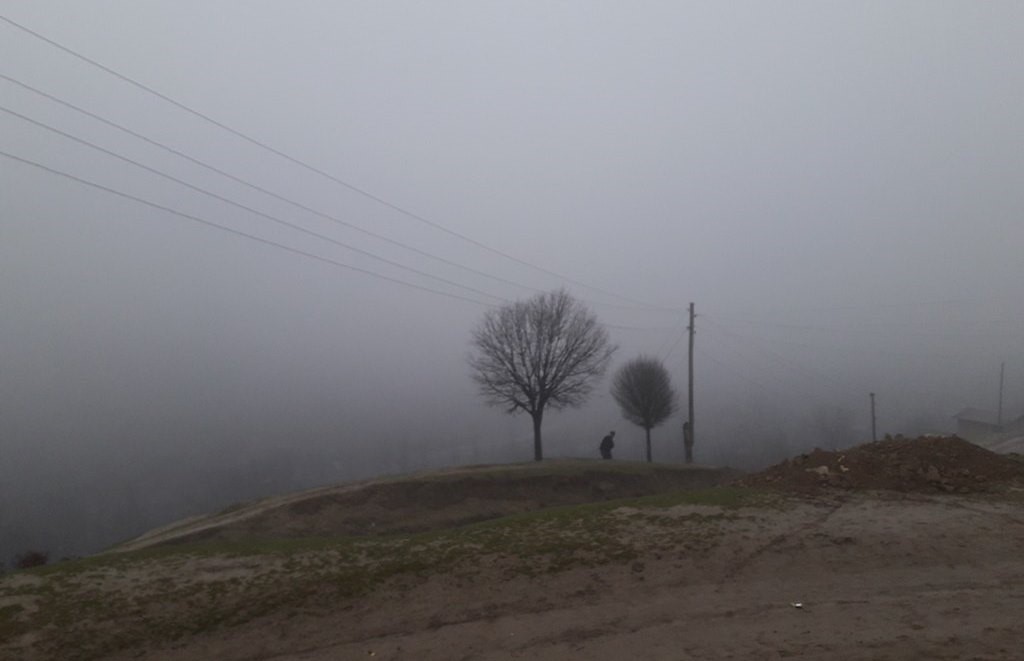The dust storms of Tajikistan
The number of such episodes in the country has increased by more than 10 times in the last 30 years, also creating problems for the economy and the health of the population. According to research commissioned by the World Bank, sandstorms lead to the premature death of 78 people per 100,000 inhabitants in Tajikistan, a figure lower only than that of Uzbekistan in Central Asia.
Dushanbe (AsiaNews) - In recent years, there has been growing interest among scholars and ecologists in the phenomena of dust spreading, a seasonal weather event in Asia that has an increasingly worrying influence on the earth's level of the atmosphere, due to the progressive desertification of many areas and pollution, especially in Central Asia. In Tajikistan, the number of dust storm episodes has increased more than 10 times in the last 30 years, also creating problems for the economy and the health of the population.
Cabar.asia (Central Asian Bureau for Analytical Reporting) expert Muazama Burkhanova explains that ‘it is not possible to avoid these events, but it is possible to find and introduce methodologies to adapt and reduce the effects of dust terrorism’. In 2023, the UN General Assembly declared 12 July as ‘International Day for Combating Dust and Sandstorms’, indicating the purpose of disseminating information and possible actions to counter these phenomena.
In March 2024, the UN proposed to all member states to exchange knowledge and methods of action in this area, in order to reduce the negative consequences in the social and economic field and on the entire ecosystem, health and well-being of people, paying more attention to those most exposed. Dust storms are linked to other climate change problems, such as droughts, extreme temperatures, land degradation, changing rainfall patterns and wind roses.
In Tajikistan, work on the problem began in 2007, when the first publications on the subject appeared by specialists from the Physical-Technical Institute of the National Academy of Sciences. According to the data of the Atmospheric Physics Laboratory, the southern and central parts of the country are right in the middle of the global dust belt from the deserts of Aralkum, Kyzylkum, Karakum, Gobi, Takla-Makan and the Iranian deserts of Dashti Lut and Dashti Kabir, as well as from the drying up of the Aral Sea. Tajik mountain ranges and cities are often smothered in dust, creating severe disruptions for increasingly prolonged periods of days and even months, even though the storms as such can blow over in a matter of minutes.
According to data from research commissioned by the World Bank, the damage to health leads to the premature death of 78 people for every 100 thousand inhabitants of Tajikistan, a figure lower only than that of Uzbekistan in Central Asia, but even more serious for the social life of the country, which has just over 10 million inhabitants, compared to 35 million Uzbeks. The causes of death of almost 5,000 people are linked to air pollution and include cardiac ischaemia and heart attacks, also taking into account the negative factor of ozone in the atmosphere.
Health costs in Tajikistan exceed 4% of GDP, and many negative effects are also felt in the loss of agricultural crops and the increasingly rapid thawing of mountain glaciers. At Cop28 in Dubai in 2023, a declaration on climate and health was approved for the first time by the 151 participating countries, putting the latter at the centre of everyone's attention. More extensive monitoring of dust storms, with more advanced forecasting systems, is essential, especially to warn farmers and take the necessary protective measures, in connection with health workers. The loss of health due to polluted air leads to serious consequences for younger generations, the growth of poverty, an increase in ‘climate refugees’ and in general the depletion of the population's genetic reserves.
Particularly urgent in Tajikistan is the need for reforestation, as it is a crucial sector in the nation's economy. Forests help biodiversity and the improvement of air and water quality by curbing the erosion of land layers. The Dushanbe government has dedicated many decrees and measures to this, in the so-called ‘Forest Sector Development Strategy for 2016-2030’, hoping that it is not too late.







.png)










